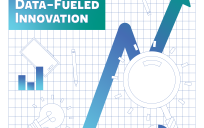Today’s rapid pace of data growth has provided agencies with unprecedented insight into the needs of the citizens they serve, allowing them to deliver improved services and meet their missions. But with more data comes new challenges around organizing, storing, and protecting this data.
According to the 2016 Data Genomics Project report, data growth is averaging at 39 percent per year and nine percent faster than we are creating individual files to store such data. This means organizations in the public and private sector alike have not been able to keep up. The report also shows that 41 percent of the total state environment has not been modified in the past three years. Twelve percent of the data is considered ancient, meaning the data has had no modification in the past seven years.
The Challenges of Data
What do these numbers mean exactly? For one, they demonstrate that government is unnecessarily holding onto data that is of no value to agencies or citizens. Bill Duffy, Archiving & eDiscovery Specialist at Veritas, shared the costs of such inefficiency.
“Gartner tells us that it costs about 39¢ per GB per month, which comes out to $5 million. The US government spends about $1.141 billion on information storage. That’s why we need to look at our storage devices,” he said. “We can’t make decisions based on billions of old files.”
Duffy shared that agencies are conditioned to keep all their data. They hesitate to get rid of it because they believe accumulation is easier than organization and deleting information that will get them in trouble.
So, what can government do to save resources and store and manage data more efficiently? This was one of the main foci as part of GovLoop’s Government Innovators Virtual Tech Day on Wednesday. To address this question, Alexis Wales, Deputy Branch Chief of the Cybersecurity Performance Management Branch, Office of Cybersecurity and Communications at the Department of Homeland Security (DHS), emphasized that the first step is better understanding the problem.
She shared leading trends that present unique challenges to agencies that include:
- Managing information and data at scale;
- Lack of standardization around the handling of data/information across, and within organizations; and
- Ability to maintain awareness of who and what is on your network.
“Access to data and networks is no longer just human to machine. Now, it’s more machine-to-machine,” Wales said. “Homeland Security is working to assess the nature of that risk and, for agencies, this requires rigor around the standardization of data governance.”
Why an Information Governance Strategy?
Wales stressed the importance of information governance strategies to lead to data-driven risk management. With more knowledge of data and more secure risk management, agencies can have better insight into their data and make better decisions for efficiency and security purposes.
“An Information Governance Strategy underscores an organization’s commitment to managing its information as a strategic asset,” Wales said.
For agencies, information governance helps establish policy, the ability to prioritize investments, and accountability for managing information. Information governance also promotes standardization and efficient, repeatable processes. A proper strategy can help agencies easily sift through their data rather than be overwhelmed by it. They can then decide what’s worth keeping, what’s not, and save space, storage, and costs. When agencies properly manage and store their data, they are also ensuring security by keeping track of what is available, what is archived, and what needs to be deleted.
The key principles of information governance include:
- Quality: Documented and repeatable processes as well as data collection automation. Agencies can have an easier time deciding what data is worth keeping.
- Standardization: Automated data tagging and data schemas as well as metadata publication. This means agencies can automatically identify and sort through various data without having a person manually go through a tedious process where there’s more room for error.
- Volume and complexity: Automated data processing for analytics and visualization and dashboards. Agencies can automatically process and analyze their data and keep track of who’s accessing data with better visual tracking.
The amount of data available to agencies will only continue to increase. Government needs stronger policies, procedures, and tools in place to better store and manage data while saving costs. With a proper Information Governance Strategy, agencies can transform from data hoarders into data masters.






Leave a Reply
You must be logged in to post a comment.